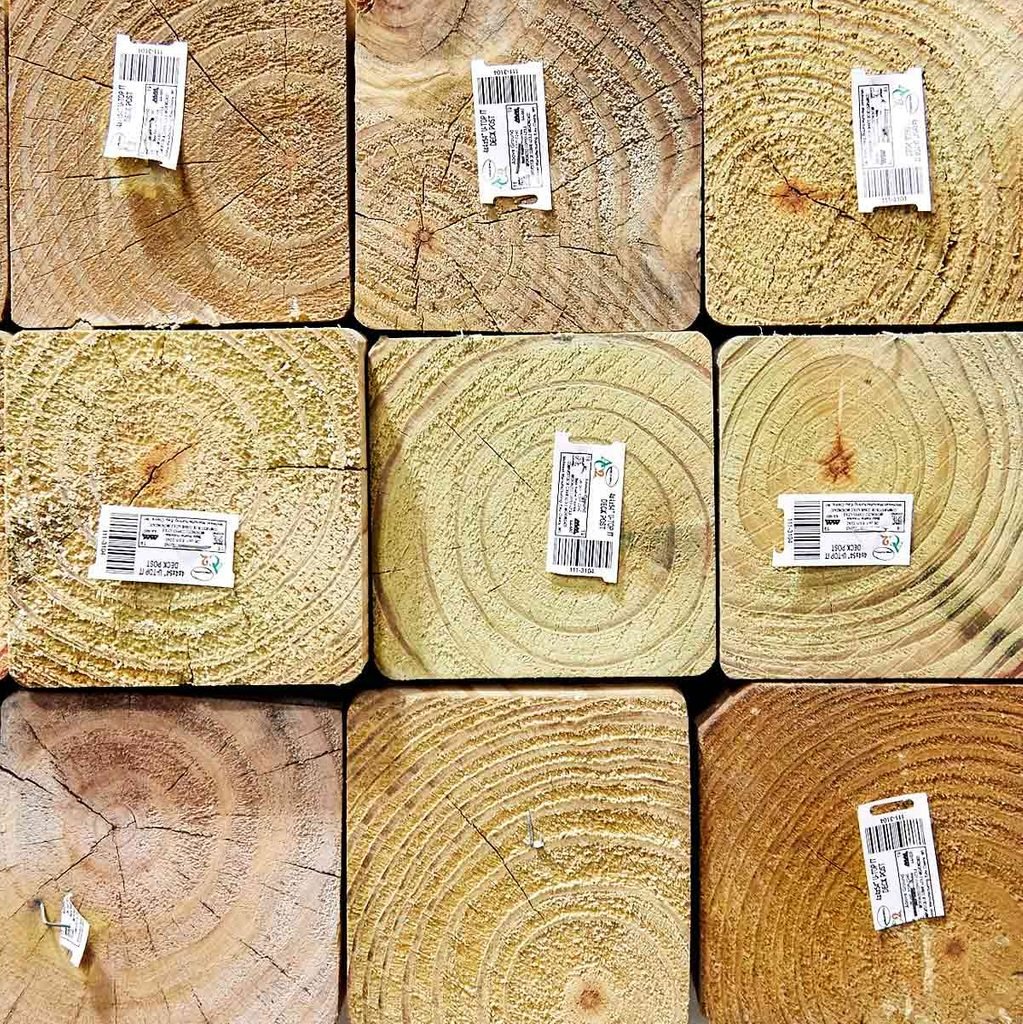Choosing 4×4 Treated Lumber
Updated: Jul. 11, 2023

Not all pressure-treated wood is equally decay-resistant. Different parts of the tree absorb treatment differently. Learn how to spot the best quality 4x4 posts by checking the growth rings.
Pressure treated lumber is wood that has gone through a chemical treatment process and high pressure. The treatment gives the wood prolonged use and is better resistant to rot and other decay.
“The active ingredients commonly used in treated wood are alkaline copper quaternary (ACQ), copper azole (CA) or micronized copper azole (MCA),” according to the Home Depot. “These compounds react with the wood fibers to slow natural decay and have properties to resist termites, fungus, moisture and other elements that promote rot and cause structural degradation.” Check out our roundup of naturally rot-resistant woods.
On This Page
How Long Will Treated 4×4 Wood Last In the Ground?
The lifetime of the wood will vary greatly depending on several factors, including what the post is used for, the type of surrounding soil and more. For example, a post used for fencing will have a longer lifespan than wood used for decking or other trafficked areas. Treated lumber could last decades, depending on these factors.
What to Consider When Choosing Pressure Treated Lumber
What is a Peeler Core?
Pressure-treated 8-ft. 4x4s are typically made from “peeler cores,” which are the byproduct of plywood production. When a log is turned on a lathe to produce plywood veneer, the center that remains, called the peeler core, is used as a 4×4 post. These cores often contain the pith, or center of the log, which doesn’t accept pressure treatment as well. Peeler-core posts are more likely to warp and twist than posts cut farther away from a tree’s center.
What are Growth Rings?
Centered growth rings indicate the post is made from peeler core and won’t accept pressure treatment well (right), while off-center rings mean the post is not the log’s center (left).
Buying Tips
When shopping for 4×4 pressure treated posts, look at the ends. If growth rings start near the center of the post and expand outward, it’s almost certainly made from a peeler core. If the rings are off center, it’s not the log’s center. Our suggestion is to buy 10-ft. posts instead of peeler-core 8-footers and trim them to fit.